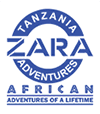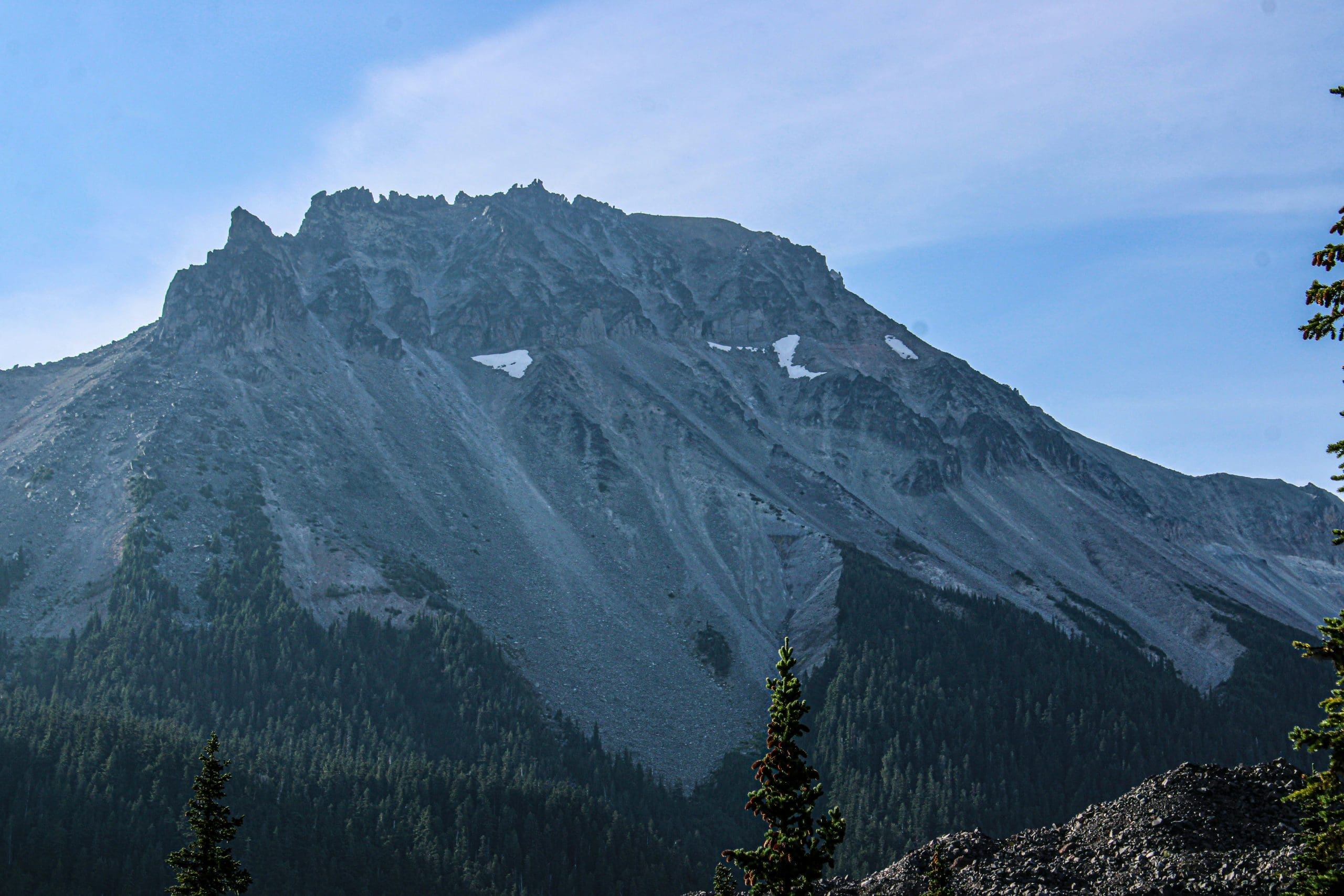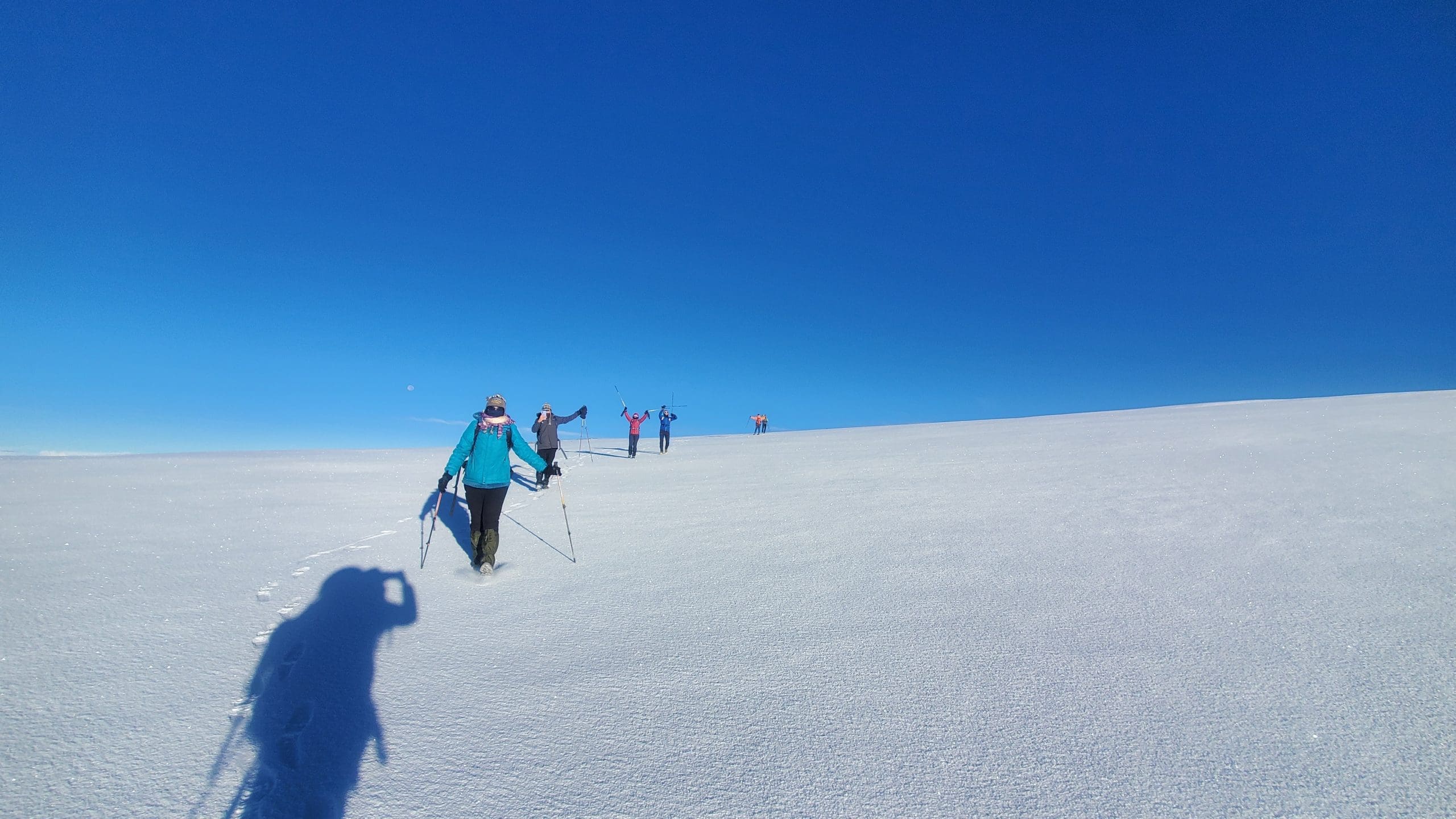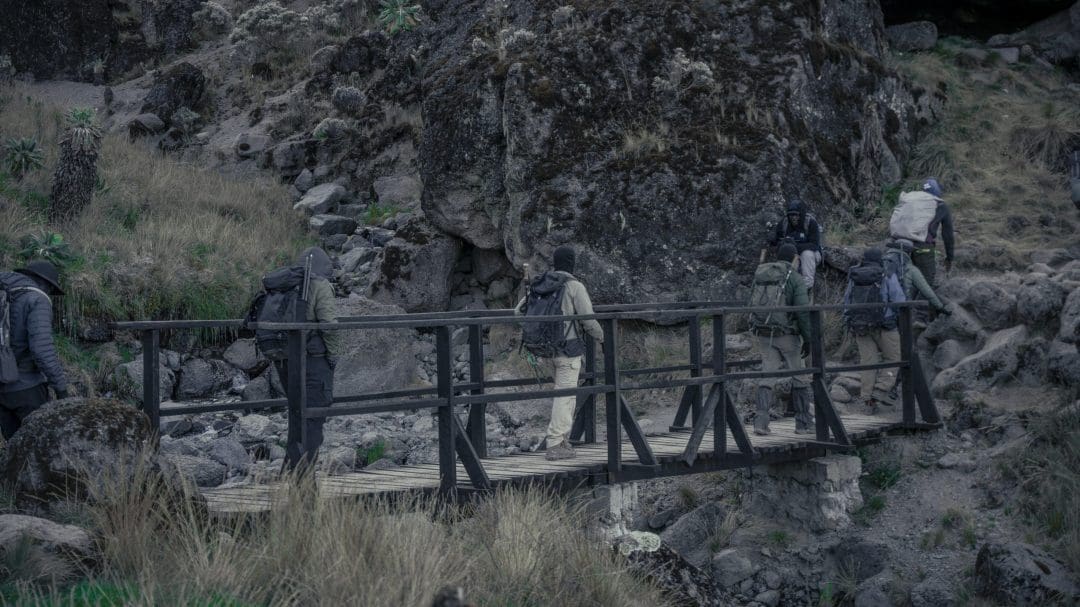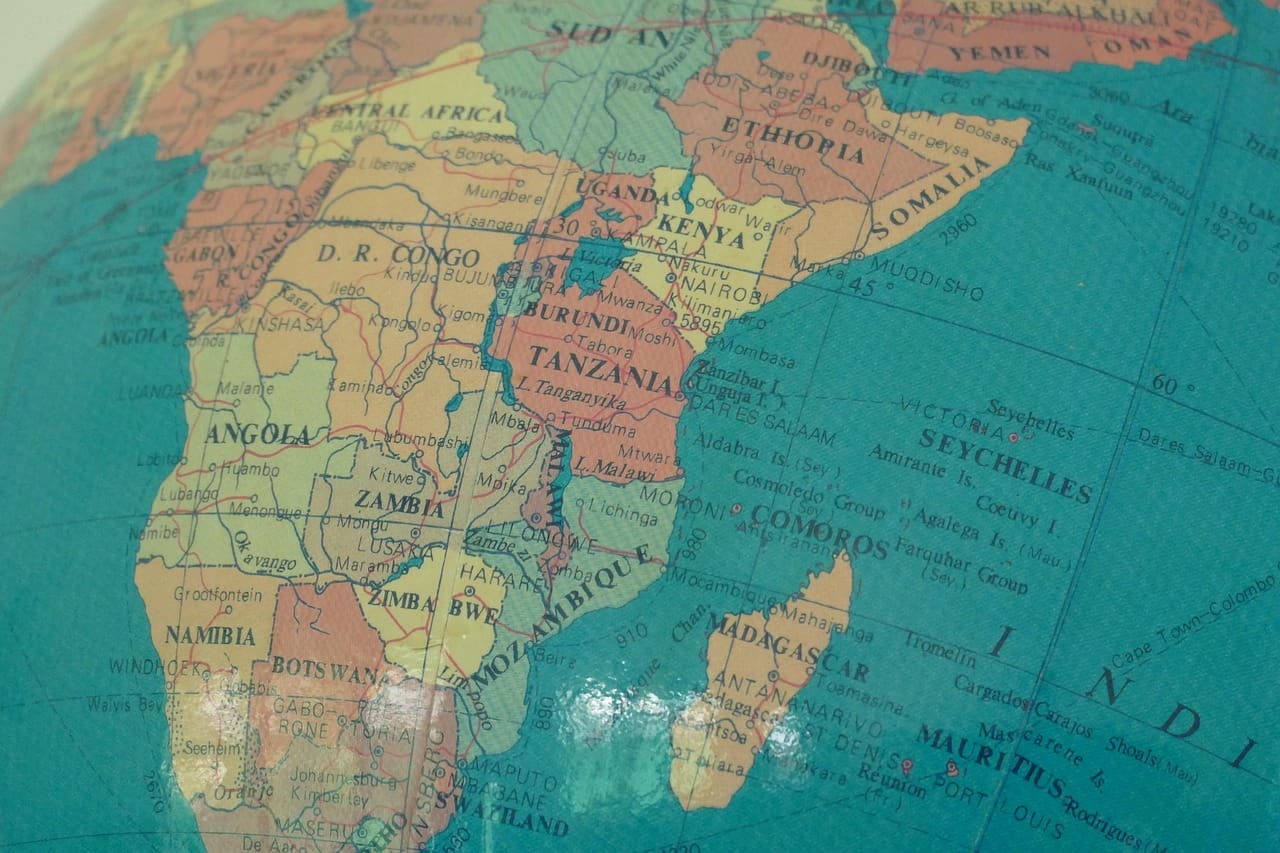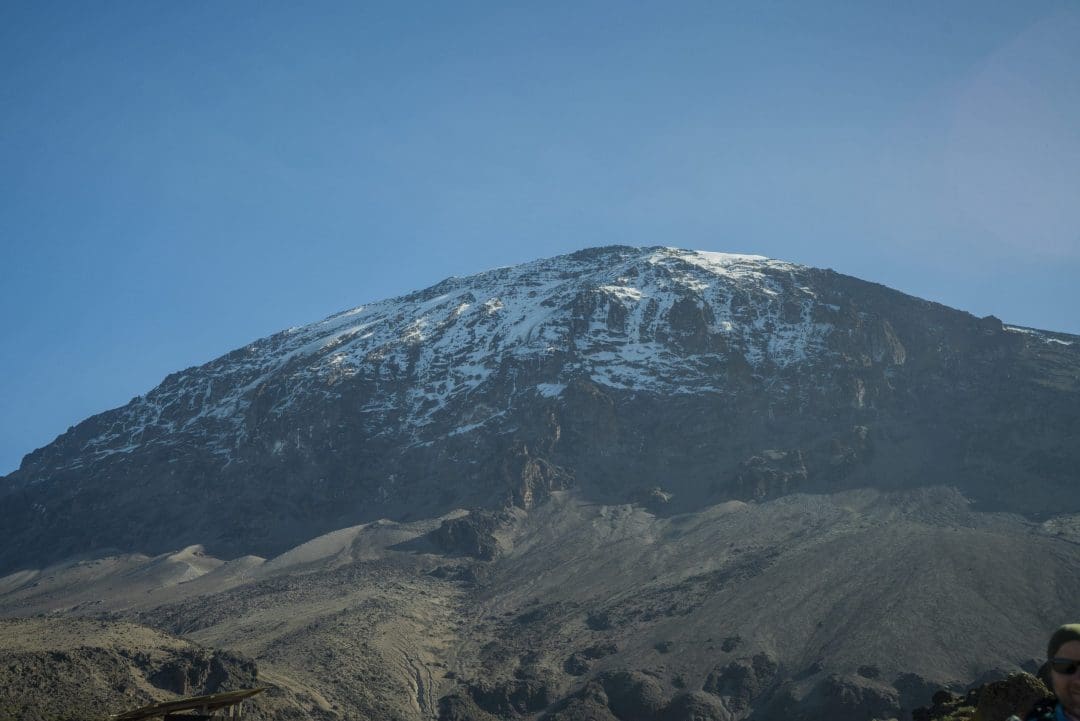North America features dramatic peaks like the Alaska Range, the Rocky Mountains, the Cascade Range, and the Sierra Madre. Among them rises Denali, the tallest mountain in North America.
With its snow-covered summit, Denali commands attention. But these towering peaks are more than just geological features; they’re places of adventure, cultural heritage, and natural beauty.
If you’re curious about the most iconic high points, the Editor of Zara Tanzania Adventures has put together a list of the 15 highest peaks in North America. You’ll discover their heights, features, and what makes each one special.
What Is the Highest Peak in North America?
The highest peak in North America is Denali, formerly known as Mount McKinley, towering at 6,190 meters (20,310 feet) in Alaska. As the tallest mountain in North America, Denali draws climbers and nature lovers from around the world.
1. Denali – Alaska, United States
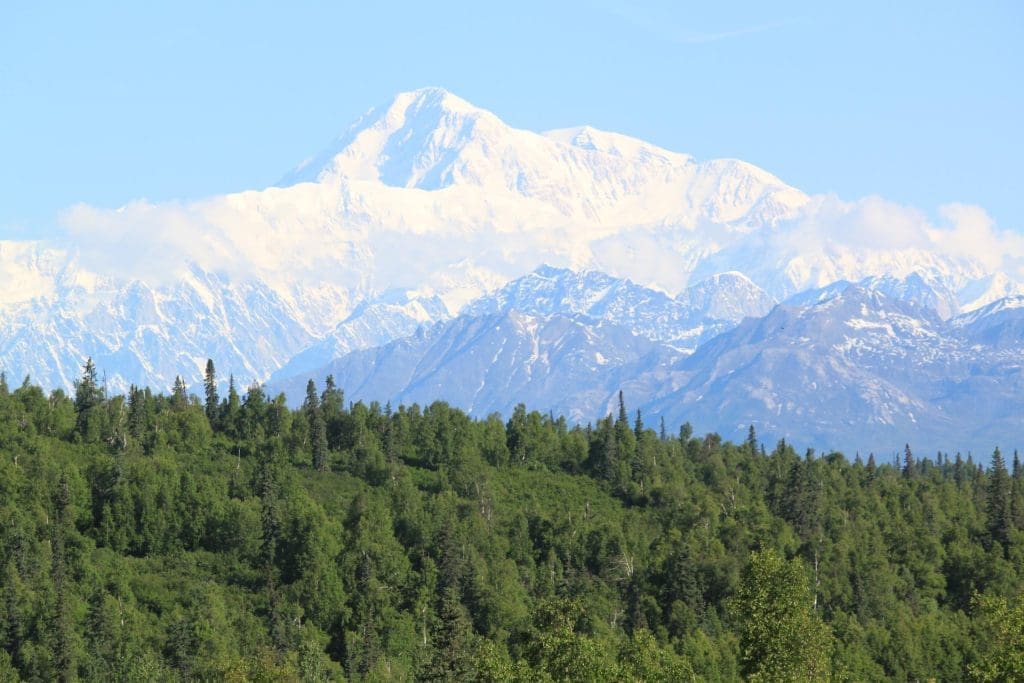
Elevation: 6,190 m (20,310 ft)
Range: Alaska Range
Location: Denali National Park and Preserve, Alaska
Mount Denial belongs to the Alaska Range, one of the most rugged mountain ranges in the US. It stands out in height and relief, rising over 5,500 meters from base to summit, making it one of the tallest freestanding mountains on Earth.
Climbing Denali is no small feat. Its location and icy slopes make it a serious challenge. However, for experienced trekkers, there is a reward in store for an unforgettable adventure. At the summit, temperatures can drop below -40°C (-40°F) in winter, and even in summer, they range between -20°C to -29°C (-4°F to -20°F). The weather shifts fast at the top, with icy winds and sudden storms, so only well-prepared climbers should attempt the journey. Those who do can enjoy vast views, quiet glaciers, and sightings of grizzly bears.
From the major mountain ranges like the Rockies and the Alaska Range to lesser-known formations, North America offers climbers different elevations and ecosystems. While the western mountains dominate in height, eastern ranges like the Great Smoky Mountains provide scenic beauty, which makes them popular among national park visitors. Let’s explore other tallest mountains in North America.
3. Mount Logan – Yukon, Canada
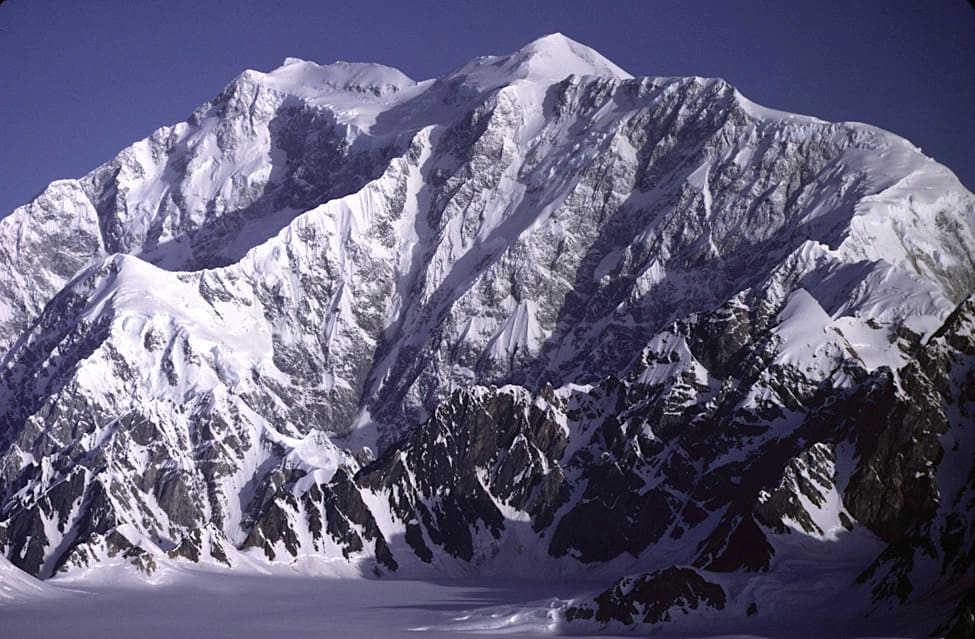
Elevation: 5,959 m (19,551 ft)
Range: Saint Elias Mountains
Location: Kluane National Park, Yukon Territory
Mount Logan is Canada’s highest summit and the second-tallest mountain in North America. Located in Kluane National Park, it’s part of the icy Saint Elias range and has the most extensive base of any non-volcanic peak.
Due to shifting tectonic plates, the landform is still growing. Climbers here face freezing winds and long glacier walks, but the view makes it all worthwhile.
It often occurs to compare Logan’s rise to those of the tallest mountains in the continental United States, a reminder of how vast North America’s alpine regions are.
3. Pico de Orizaba – Mexico
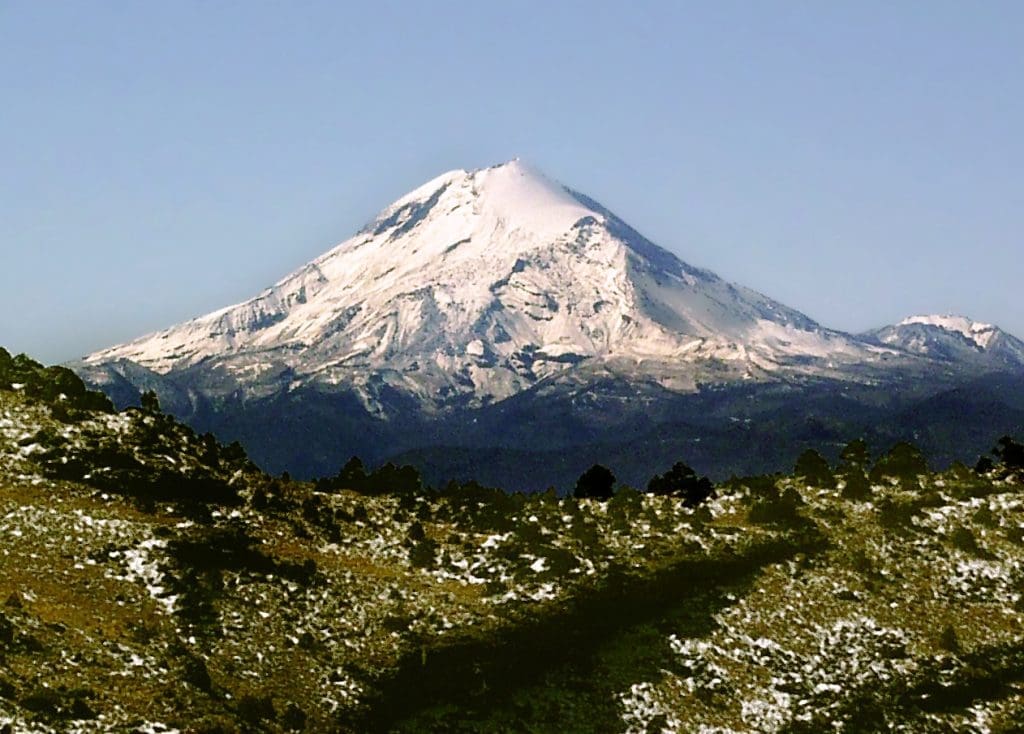
Elevation: 5,636 m (18,491 ft)
Range: Trans-Mexican Volcanic Belt
Location: Border of Veracruz and Puebla, Mexico
Also called Citlaltépetl, Pico de Orizaba is the highest in Mexico and the third tallest in North America. Its name means Star Peak in the Quechua Acon Cahuak language group.
Despite being a volcano, it is dormant and may be climbed safely with sufficient planning. The glaciers on its slopes glow in the sunlight, and the view at sunrise is stunning.
With easy routes, it is viewed as one of the most accessible high-altitude climbs on the continent. Pico de Orizaba has well-defined climbing conditions on and off the summit. On a clear day, climbers can enjoy breathtaking views, tour volcanic craters, and even see remote coasts.
4. Mount Saint Elias – Alaska, United States / Yukon, Canada

Elevation: 5,489 m (18,009 ft)
Range: Saint Elias Mountains
Location: Alaska–Yukon border
Mount Saint Elias is a steep peak that rises directly from sea level. It is the second-highest mountain in both the U.S. and Canada, making it a climb. What makes this summit stand out is how it connects land and ocean. Glaciers descend straight toward the Gulf of Alaska.
This rugged landform is part of the Coast Ranges, which hug the Pacific. Because of active tectonic plates, the area is still rising. Climbers face snowstorms, thick ice, and remote paths, making Saint Elias a wild challenge.
5. Popocatépetl – Mexico

Elevation: 5,426 m (17,802 ft)
Range: Trans-Mexican Volcanic Belt
Location: Puebla, Mexico
Popo, as it’s often called, is one of the most famous volcanoes in North America. This stratovolcano sits near Mexico City and usually puffs out steam. Because of its activity, it’s sometimes closed to climbers, but when it’s safe, it offers beautiful alpine terrain and icy ridges.
Its story is tied to ancient Mexican legends, particularly the tale of Popocatépetl and Iztaccíhuatl, two star-crossed lovers. According to Aztec myth, the warrior Popocatépetl stands watch over the sleeping princess Iztaccíhuatl. Both were immortalized as volcanoes, a symbol of eternal love and guardianship over the land. Popo is a landmark that reflects both natural power and cultural tradition.
6. Mount Foraker – Alaska, United States

Elevation: 5,304 m (17,402 ft)
Range: Alaska Range
Location: Denali National Park, Alaska
Mount Foraker is often seen as Denali’s quiet neighbour. While it’s one of the highest peaks in the U.S., it doesn’t get as many visitors. But for skilled climbers looking for solitude and technical routes, Foraker offers everything.
Its slopes are steep and snowy, with fewer trails and more natural beauty.
The mountain’s indigenous name, Sultana, means the woman and pairs symbolically with Denali, the high one. Together, they create one of North America’s most awe-inspiring alpine landscapes. It is also part of a larger water system connected to the Continental Divide, which controls the flow of rivers throughout the continent.
7. Mount Lucania – Yukon, Canada

Elevation: 5,260 m (17,257 ft)
Range: Saint Elias Mountains
Location: Kluane National Park, Yukon
Mount Lucania is Canada’s third-highest mountain, deep in the Saint Elias range. It is remote and challenging to reach. Climber Bradford Washburn made history in 1937 by flying to its base, an incredible feat at the time.
With glaciers all around and the unpredictable mountain weather, climbing Lucania is a serious challenge. Hikers often take the Walsh Glacier route, one of the longest ice fields in North America. It’s quiet, wild, and rewarding for those who reach the top.
8. Iztaccíhuatl – Mexico
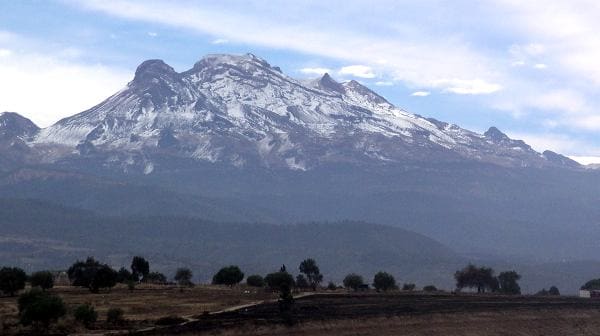
Elevation: 5,230 m (17,160 ft)
Range: Trans-Mexican Volcanic Belt
Location: Puebla State, Mexico
Known as the Sleeping Woman, Iztaccíhuatl’s silhouette resembles a lying figure. Though no longer active, it still has glaciers and is a safer climb than the nearby Popocatépetl.
Climbers love the scenic path through forests and open slopes. The mountain also holds cultural significance, tied to Aztec legends about love and sacrifice. It’s a popular high-altitude option close to Mexico City.
Iztaccíhuatl trails pass through pine forests and alpine meadows, ending in views of Popocatépetl, which lies just to the south.
9. King Peak – Yukon Border, Canada
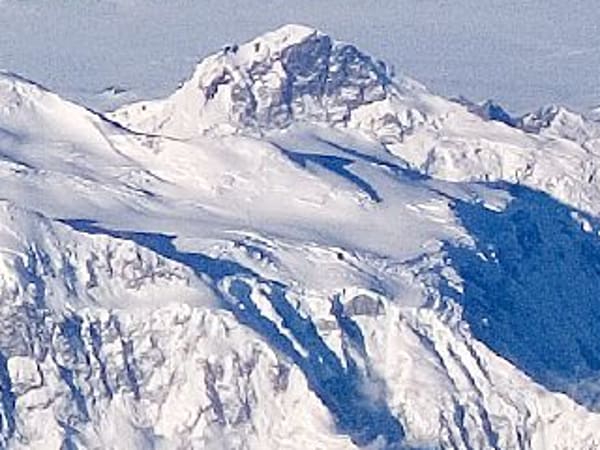
Elevation: 5,173 m (16,972 ft)
Range: Saint Elias Mountains
Location: Alaska-Yukon border, Canada
King Peak is located in the Saint Elias Mountains on the Alaska-Yukon border.
As part of the highest mountain range in Canada, it is one of the least discovered mountains in the region, mainly due to its remote location and challenging weather conditions. Students at the University of Alaska climbed King Peak for the first time in 1952.
10. Mount Bona – Alaska, United States

Elevation: 5,044 m (16,550 ft)
Range: Saint Elias Mountains
Location: Wrangell–St. Elias National Park, Alaska
Mount Bona is the highest volcano in the United States and a top peak in Wrangell-St.. St. Elias National Park. Glaciers surround it and contribute ice to the massive Russell Glacier system.
The park itself is part of the national parks system and a UNESCO World Heritage Site, protecting natural landscapes and ecological zones. Climbers here deal with cold, snow, and steep glacier travel.
11. Mount Steele – Yukon, Canada
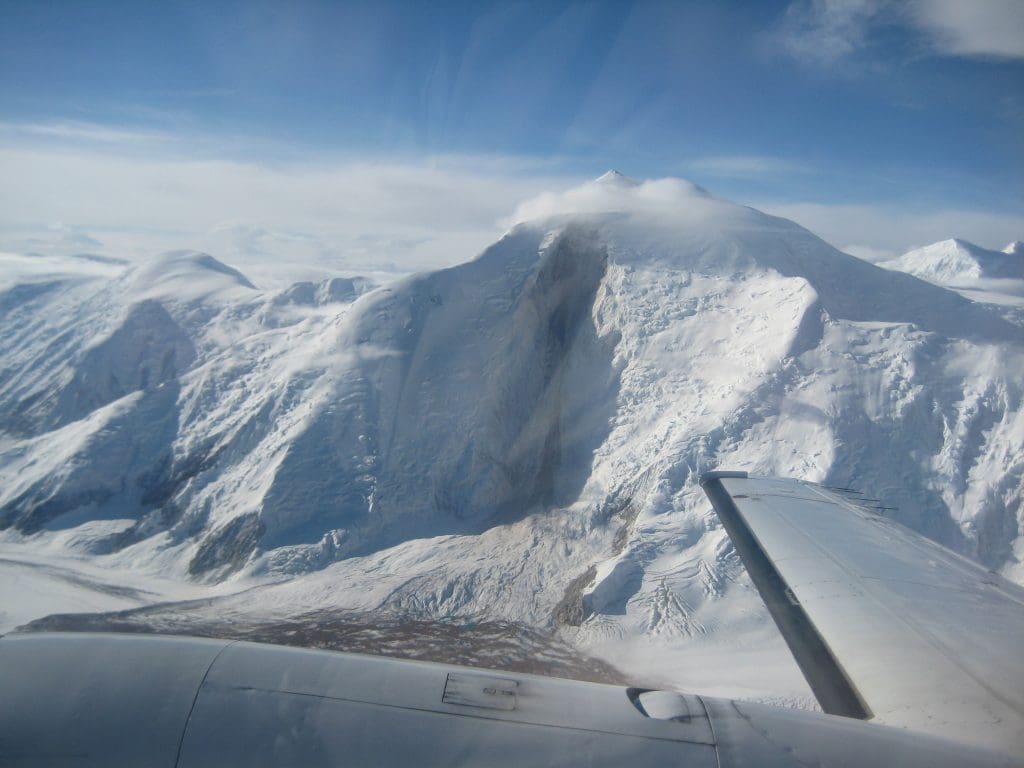
Elevation: 5,020 m (16,470 ft)
Range: Saint Elias Mountains
Location: Yukon Territory, Canada
Mount Steele is the fifth-highest summit in Canada and sits in the Saint Elias range, a subregion tied to tectonic plates in the North. Named after Sam Steele of the Canadian Mounted Police, this peak is icy, remote, and an exciting challenge for climbers.
The mountain requires glacier travel and self-reliance.. Due to unpredictable weather, most climbers aim for early summer ascents when the snow is more stable.
12 Mount Blackburn – Alaska, United States
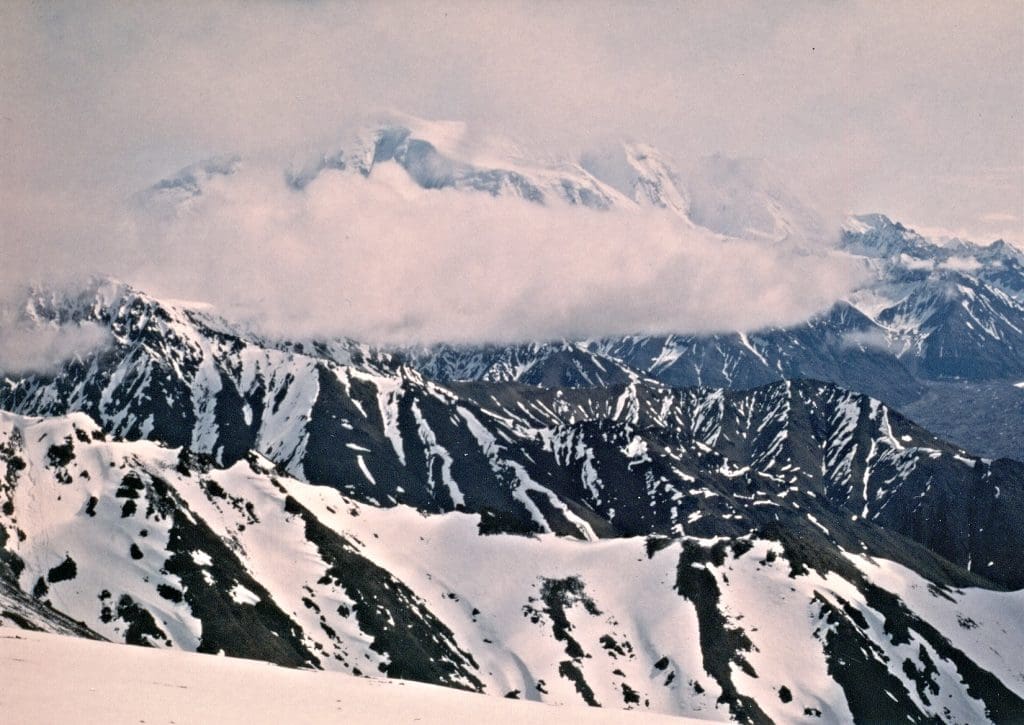
Elevation: 4,996 m (16,390 ft)
Range: Wrangell Mountains
Location: Wrangell–St. Elias National Park, Alaska
This massive dormant volcano is the tallest in the Wrangell Range. It is ice-covered. Blackburn slopes feed major glaciers like the Kennicott, which is vital for the area’s water systems. The climbing routes are long and wild but offer a peaceful and less-crowded experience.
Climbers can access the mountain from McCarthy, Alaska, a remote town that serves as a gateway to wild trekking adventures. Although it lacks the fame of Denali, Blackburn is just as rewarding for those seeking less commercialized ascents.
13. Mount Sanford – Alaska, United States
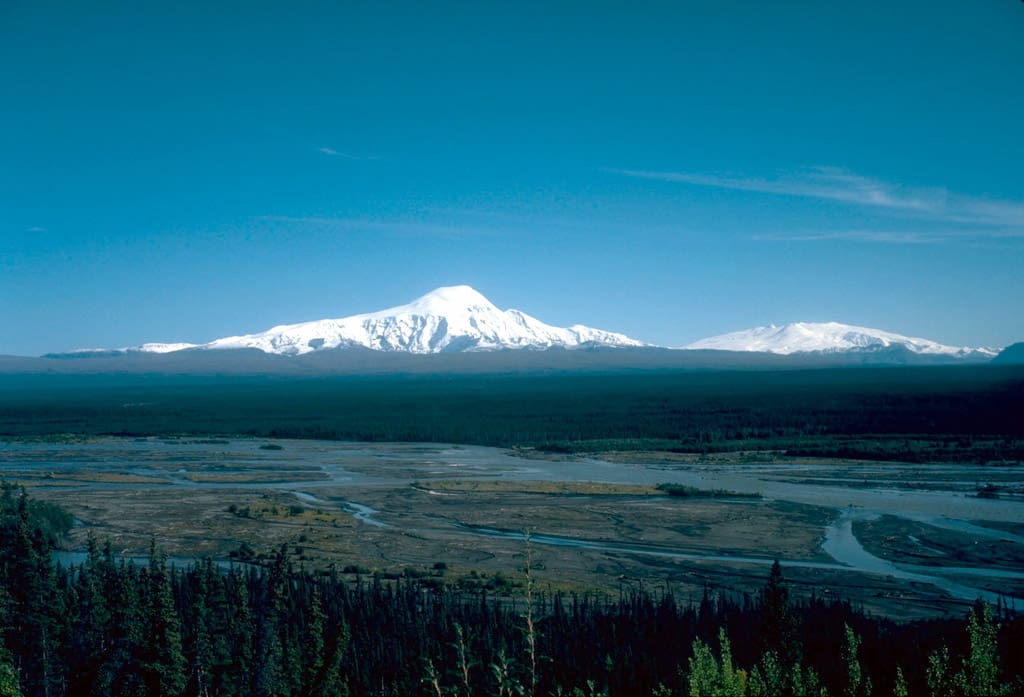
Elevation: 4,949 m (16,237 ft)
Range: Wrangell Mountains
Location: Wrangell–St. Elias National Park, Alaska
Mount Sanford is another volcano in Alaska, offering quiet beauty and a glacial picture. It’s among the most isolated major mountain ranges in the U.S. Expeditions here require weeks of glacier journey.
Though technical challenges are mild, the effort needed to access and climb Sanford makes it a feat. Climbers have to land by bush plane to reach its base, followed by lengthy glacier approaches. Sanford’s top slopes are coated in deep snow and ice, making the ascent physically demanding but moderate.
14. Mount Wood – Alaska, United States / British Columbia, Canada
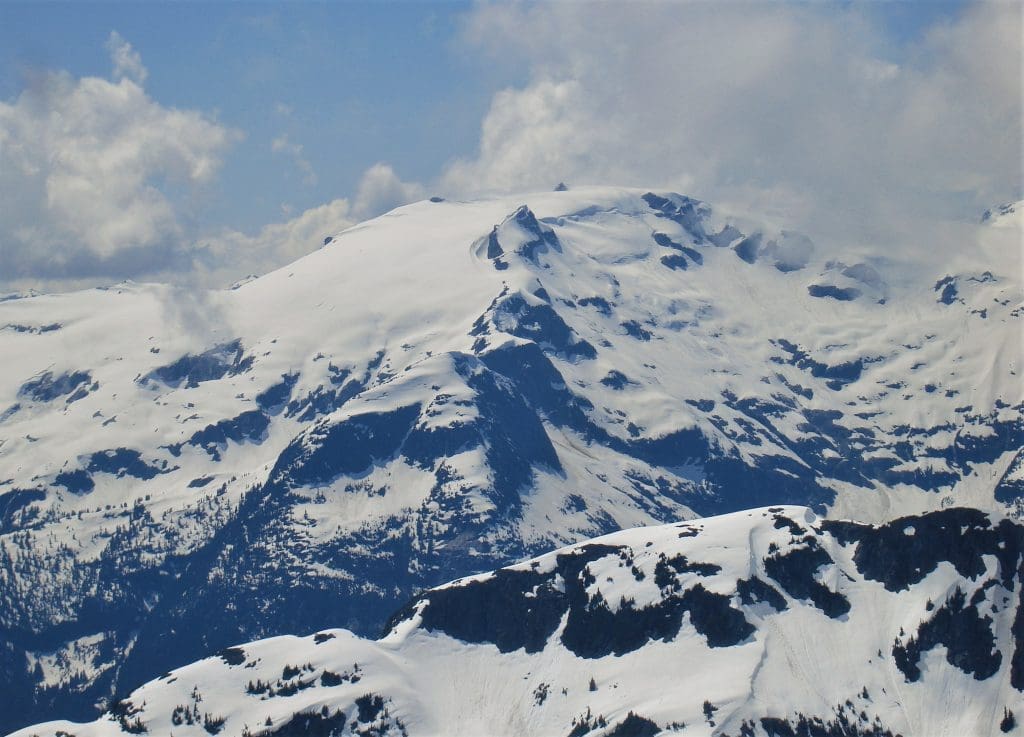
Elevation: 4,860 m (15,945 ft)
Range: Saint Elias Mountains
Location: Yukon’s Saint Elias Mountains
The 14th highest peak in North America is Mount Wood, located in Yukon’s Saint Elias Mountains.
Mount Wood is covered by glaciers, just like most of the other mountains in the Saint Elias Mountains. It has been named in memory of William Robert Bob Wood, a Canadian geologist who conducted numerous geological surveys and studies in the Yukon from the late 19th to the early 20th century.
15. Mount Vancouver

Elevation: 4,812 m (15,787 ft)
Range: Saint Elias Mountains
Location: Border of Alaska and Yukon
The final spot on the list is that of Mount Vancouver in the Saint Elias Mountains.
It also has a name, Captain George Vancouver, after a British Royal Navy officer who explored the regions around the current British Columbia, Alaska, Washington, Oregon, and California. Vancouver gave names to many of the mountains, such as his officer friends and Mount Baker, Mount St Helens, and Mount Rainier.
Climbing Denali or Kilimanjaro: What’s Next for You?
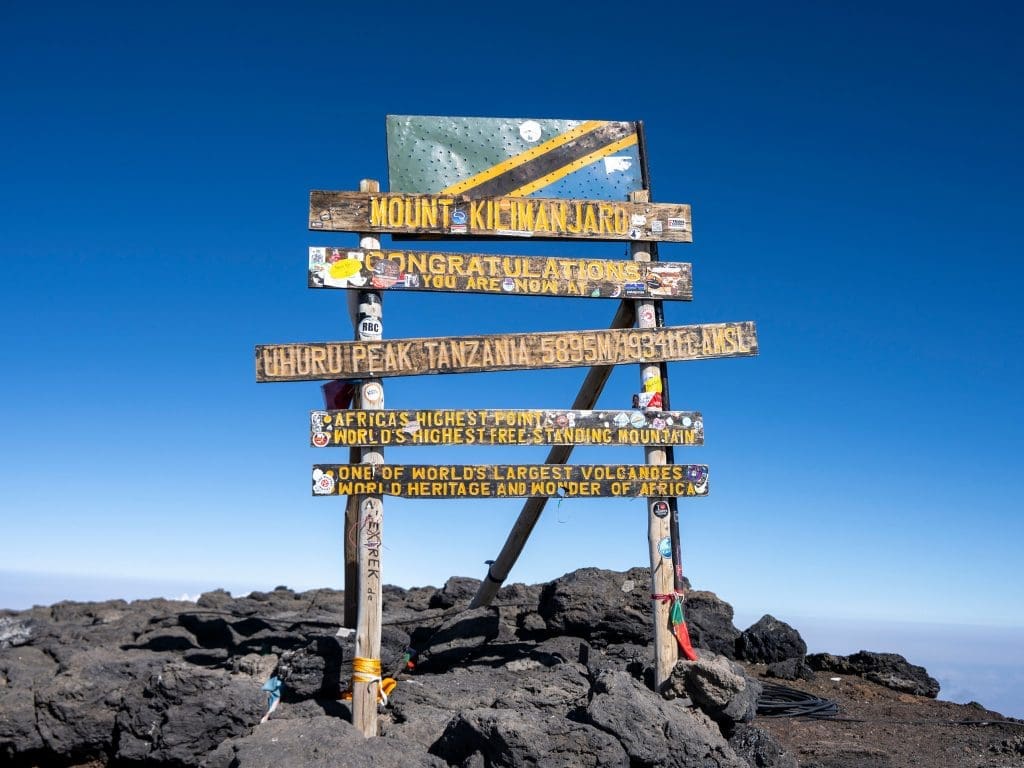
While Denali claims the title of the tallest mountain in North America, Africa boasts its crown jewel: Mount Kilimanjaro. Rising to 5,895 meters (19,341 feet), climbing Mount Kilimanjaro is a different kind of challenge, less technical but requiring endurance through multiple zones.
Kilimanjaro is a standalone stratovolcano considered more accessible to non-professional climbers. In comparison, Denali involves technical ice climbing, crevasse navigation, and extreme weather. For trekkers looking to experience the magic of high altitudes without advanced alpine gear, Kilimanjaro remains one of the best options in the world.
FAQs
1. What is the highest mountain in North America?
Denali, at 6,190 meters (20,310 ft), is the highest mountain on the continent and is located in Alaska. While the focus is on the highest elevations, other famous ranges like the Appalachian Mountain chain also offer unique trekking experiences in the eastern United States.
2. Are all the highest peaks in North America in Alaska?
No, but many are. Other high peaks are found in Canada and Mexico, including Mount Logan and Pico de Orizaba.
3. Can beginners climb any of these mountains?
Yes! Mountains like Pico de Orizaba and Iztaccíhuatl are popular among beginners with good fitness. Others, like Denali or Mount Lucania, require advanced mountaineering skills.
4. How does Denali compare to Kilimanjaro?
Climbing Denali is taller and more technical, while climbing Mount Kilimanjaro is achievable for fit trekkers with no technical climbing experience.

